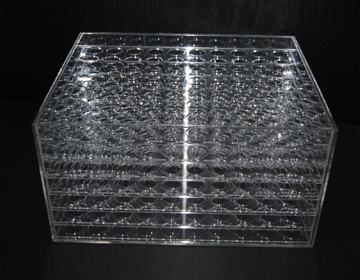There are numerous plastic fabrication processes to choose from, and you will find broad ranges associated with freedom of shape, setup costs, charges for each component, completion time, plus the scope of manufacturing the technique permits. Popular techniques encompass CNC (computer numerical control) machining and vacuum formation, both of which appeal to alternative design and style and manufacturing needs. CNC, for example, has a moderate degree of freedom when considering the form, a finish time of under a day, a medium set-up cost, steeply-priced individual parts, and accommodates massive scale development. Vacuum formation, in contrast, features a very limited freedom of shape, only really suitable for creating simple shapes, and can feature a finish time of up to a month. In addition, because there is a diverse scale of CNC machines, from simple desktop devices, to much more sophisticated pieces of equipment, the setup cost varies from very low to high, and the price per part and the completion time are very diverse, and reliant on the sophistication of the equipment.
Introduction To CNC Machining
CNC machining is a computer regulated subtractive procedure, that removes material from plastic in order to create the desired shape. The computer is high-tech, with the capability to convert a model into figures using a computer aided design computer software system. The figures are then able to manipulate the machine to cut the necessary form. To setup, the pieces of equipment require an intermediate stage in the development and validation of tool paths. When the machine is provided with the tool paths, the subtractive process is started. When the construction is finished, the component part is cleaned, smoothed, and cut.
For lower volume plastic component applications that demand tight tolerances and forms that are tough to mould, machining is suitable. CNC machining has the benefit of low to moderate initial expenses, and can also produce top of the line plastic components with minimal finishing times. Nonetheless, with an increase of product intricacy, the charge per element increases. On top of that, this process requires tool access considerations, and specific designs, including those with curved internal channels, are near-impossible to make using CNC manufacturing. You can find numerous bespoke acrylic display boxes internet pages in Britain, if you are looking to find out more or sometimes prices this web page is the best place to start thermoforming with acrylic.|Go here for further details www.displaydevelopments.co.uk.Should you be looking for additional info associated with plastic machining this specific webpage plastic fabrication company contains numerous more write-ups in respect to thermoforming plastic parts. This article plastic fabricators Uk has a lot more information on the main topics prototyping of plastic. They’re a great many thermoforming plastic companies blogs in Britain, if you are looking for more info and / or values this blog is the best starting point
Vacuum Formation
Vacuum formation is a process in which plastic material is warmed and moulded, ordinarily working with a mould. The scale and sophistication of vacuum-forming machines range between cheap desktop devices to innovative production equipment.
It can be suitable for any task, from made to order designs to large-scale production, considering the large variety of equipment available and that automatisation is undoubtedly an option if required. Nonetheless, there’s little freedom in the different types of design it can develop, and is also unfortunately exclusively competent to produce pieces with simple geometries. In comparison to various other methods, tooling prices are minimal, simply because vacuum formation merely needs minimal forces and pressures. Normally, for small manufacturing sizes the moulds are constructed with 3D printed resin, or even plaster, and then for higher manufacturing sizes more durable equipment made of metal is used.
The manufacturing process starts off with a sheet of plastic being clamped and heated up until the plastic becomes mouldable. The plastic will then be put into the mould and cooled down, and frequently fans as well as other cooling methods are utilised in order to accelerate the cooling process. The last stage entails any surplus plastic being taken off.

